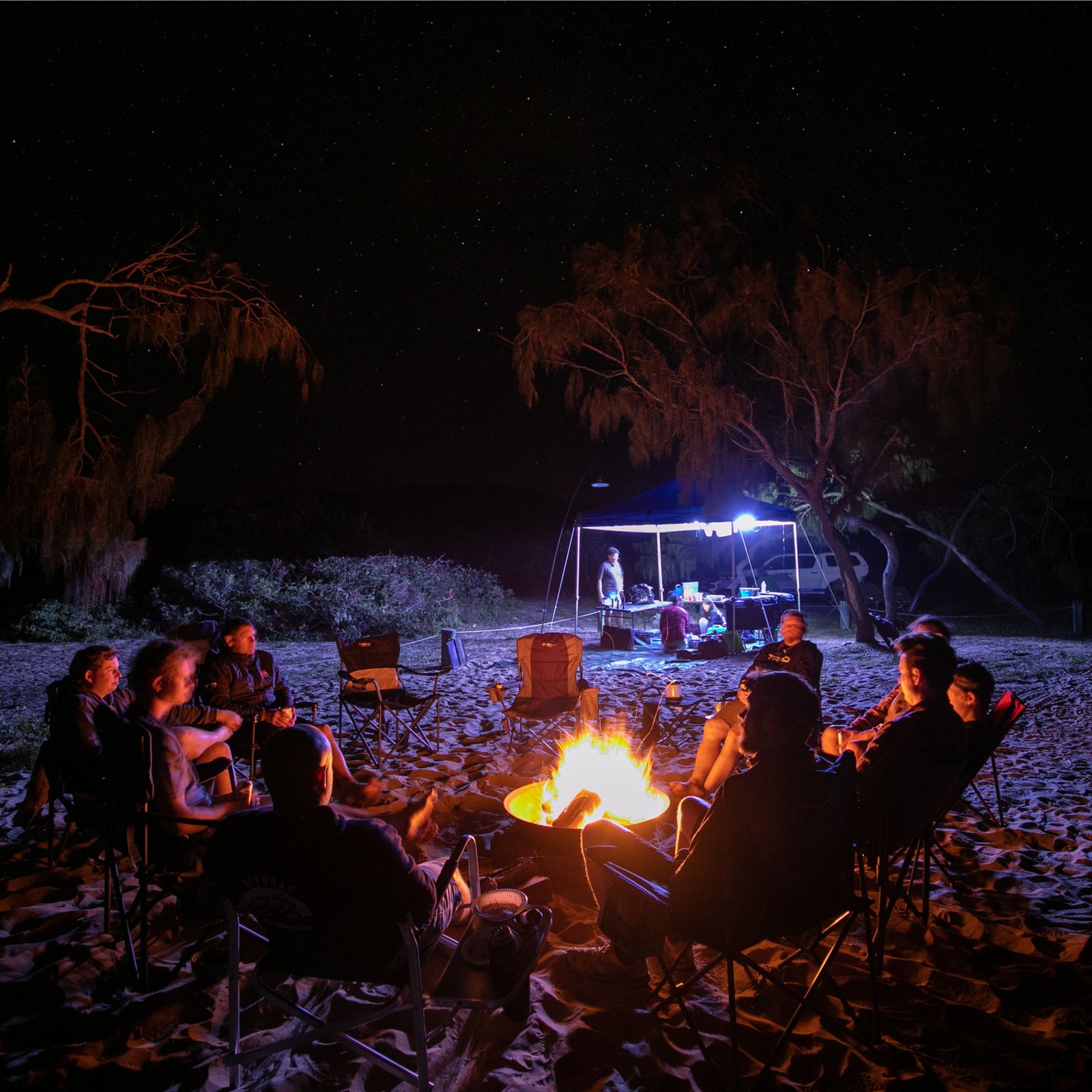Whether it’s for cooking, warmth, light, marshmallows or just a backdrop for campfire stories, a roaring fire is the centrepiece to any campsite.
But, before you can start cracking cans and swapping tales over the fire, you’ll need to actually start the fire.
If you have matches or a lighter, it shouldn’t be any worries. Just arrange some smaller sticks in a ‘tepee’ shape, leaving room in the centre for kindling (newspaper, twigs, dried leaves, pinecones etc.). Once the flame’s caught, it should be pretty easy to get the fire going.
However, what are you meant to do if you don’t have matches or a lighter? The good news is that humans have been making fires far longer than we’ve had matches.
Any fire will need the following: ignition, oxygen and fuel.
Here are some different techniques for making a fire without matches.

Using a lens
Whether you know it or not, you’ve probably done this at least once in your life. Did you ever get a magnifying glass to try to burn random objects? Neither did we, of course – but you get what we mean!
What you’ll need:
Glass lens (I.e. magnifying glass, eyeglesses, binocular lens, piece of glass), kindling, direct sunlight.
How to do it:
Angle the piece of glass so that the sun’s reflection through the lens is as small and concentrated as possible. Direct this sunlight towards your kindling. If done correctly, you’ll soon be on your way to a smouldering fire!
The one major downside to using a lens is that you need sunlight - obviously. So this is a no-go after dark or on overcast days.
Final tip: You can increase the intensity of the beam by covering the glass with water.
Creating friction with your hands
This technique you have almost certainly seen in movies before. The good news is that it actually works. The bad news is it's not the easiest thing in the world — you might just need to put your back into it and not get disheartened if you don’t see immediate results.
What you’ll need:
- Kindling nest made out of dry grasses, leaves, bark etc
- Piece of wood and cut a small notch and indent next to each other
- A piece of bark
- Stick at least 60cm long (two rulers)
How to do it:
Cut a notch into the piece of wood as well as a small indent. Place the piece of bark underneath to catch any embers created from spinning the stick. Once this is done you can start spinning the stick.
As you roll the stick back and forth in your palms, maintain downward pressure on your fireboard as you push down. You simply repeat this until you see an ember on the fireboard.
Once the ember is created, tap it onto the piece of bark and transfer to your kindling and gently blow.
Flint and steel
We always recommend carrying a good quality set of flint and steel on any exploratory mission (or family camping trip).
What you need:
Flint and steel set, char cloth (to catch sparks) or kindling.
How you do it:
Hold the flint in one hand, firmly gripping between your thumb and forefinger. Leave around 5 cm of the flint hanging out. Repeatedly strike the steel against the flint, angled towards the kindling. If things go to plan, sparks will catch on the kindling.

Our tip
While the above options do work and can be a bit of a novelty, there’s nothing easier than a trusty box of matches or a lighter.
Especially if you’ve had a long day of exploring and you just want to sit back over the fire and relax, the last thing you want is to be crawling around on the ground looking for sticks. That’s why we recommend including matches and a lighter in your camping essentials pack.

